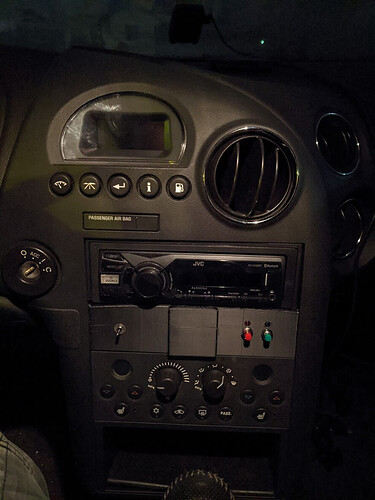Just got back from driving for an hour, to double check that everything is fine (it is). An hour ago, before the drive, I installed the first front panel. I’m not happy with the print quality, it warped considerably and the layer adhesion is awful (ran the speed too quick), so a small crack formed down the center.
I printed it upside down to reduce needed supports, that’s why the top is warped, rather than the bottom.
Regardless, it fits, and it’s functional. Can always swap in another revision whenever.
Here’s a video of starting it with the front panel installed, it’s a lot more effective than with everything flopping around. I still have to get used to positioning, though.
When I print the next version, I’m going to do so in some black PETG for sure (just ordered a roll). Temperature resistant as well, less carcinogenic, and prints way easier.

